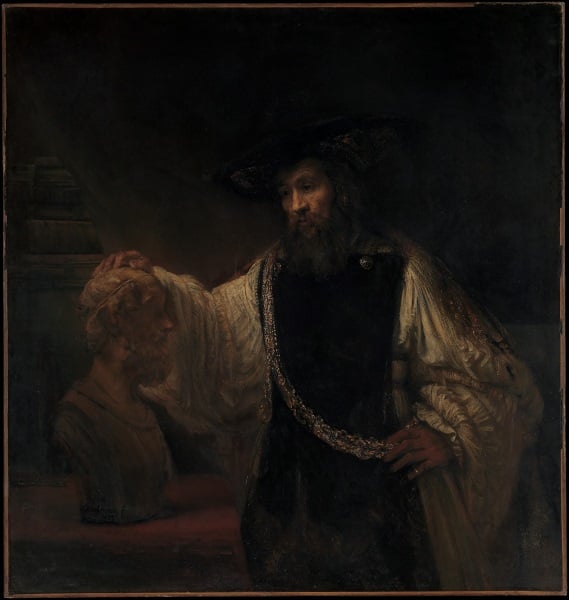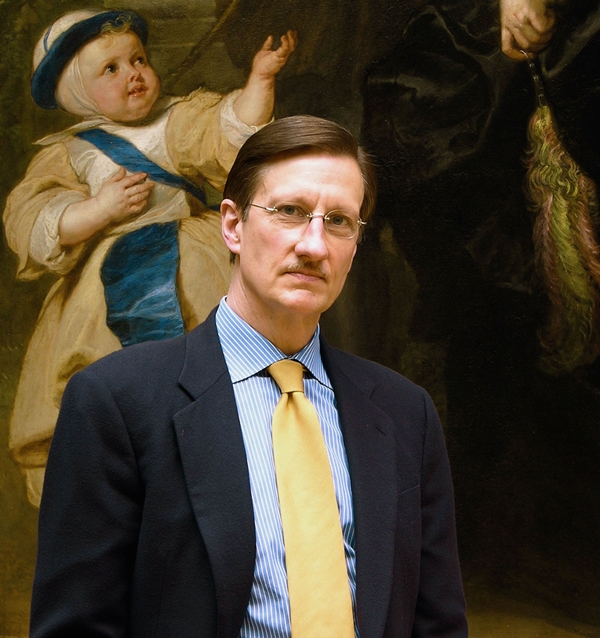Walter Liedtke, the Metropolitan Museum of Art’s curator of Dutch and Flemish painting, was killed in the crash of a Metro-North train Tuesday evening. Liedtke commuted from the Upper East Side to his home in Westchester County, where he lived on a farm with his wife Nancy. (See Beloved Metropolitan Museum Curator Killed in Metro-North Train Crash.)
Liedtke presided over an astonishing wealth of canvases, including masterpieces by Rembrandt and Vermeer as well as Salomon van Ruysdael, Aelbert Cuyp, and Jan van Goyen. He narrated several videos for the museum’s website, which also includes some of his brief essays.
The curator took pride in the museum’s scholarly exhibitions, in a text he wrote for the website Codart. Since so many of the Met’s visitors are “knowledgeable New Yorkers or foreign visitors with the Met first on their list of things to see,” he said, the museum could offer “sophisticated exhibitions, scholarly catalogues and labels addressed (exclusively by curators) to readers who already know something. This perhaps somewhat elitist approach has not turned viewers away. ‘Vermeer and the Delft School,’ for example, had 555,000 visitors in 2001, more than any other art exhibition of that year in the world.”
Liedtke narrated a video on one of the museum’s most iconic holdings, Rembrandt’s painting Aristotle with a Bust of Homer. In addition to offering exceptional praise, he accounted for his own personal reaction to the work: “There’s more meaning than usual packed into a Rembrandt. But I’m drawn to it initially because it’s compelling. I sort of got it in my gut or my heart. It’s still got all the freshness and directness that Rembrandt always does.”
He also narrated the video “Living with Vermeer,” in which he talked about owning several 17th-century Dutch paintings and engravings, and the fact that life on a farm echoed, for him, aspects of some of the Dutch landscapes he studied.

Rembrandt (Rembrandt van Rijn), Aristotle with a Bust of Homer (1653). Liedtke narrated a video detailing the painting.
Photo: Courtesy of The Metropolitan Museum of Art, New York
He spoke disarmingly about another part of his collection, one that echoed a taste popular in the period and area he studied:
A very Dutch thing is that I collect Chinese porcelain of the 1600s. One of the things I like about collecting porcelain is that I don’t think historically about it. I don’t know what’s going on in China at the time! And that’s kind of liberating.
Liedtke had a gift for speaking and writing clearly and unpretentiously about even Jan Vermeer, one of the greatest artists of all time. In one essay on the Met’s website, he wrote,
Vermeer idealized a domestic world occupied (if not animated) mostly by women, whose postures, behavior, and in some cases expressions suggest close study and sympathy (in this the artist resembles Gerard ter Borch, the Younger, whose work he knew). He often suggests some connection between a figure and the viewer, subtly casting the latter in the role of a spellbound voyeur.
In “Living with Vermeer,” he recounts the birth of his own fascination with art.
I became fascinated with the play between perception and making a picture. And nothing really presses those questions more than Vermeer. Vermeer is complicated and simple at the same time.… It is so closely watched, so hypnotically studied. They seem like a vision.
In a personal aside, in the video, Liedtke said, “I think there is something Dutch about the way I live. To go home every day from the Upper East Side of Manhattan to the countryside is a really nice contrast. … At the essential level, what’s the most Dutch about it is this constant return to immediate experience. I get up, I go to the barn, I clean the horse stalls.”
Perhaps the vision of quietude in Vermeer’s paintings appeals to us especially now because we live such busy lives, he speculated.
“It’s like a personal vision,” he said. “You might have it anywhere—on the train or at home.”








